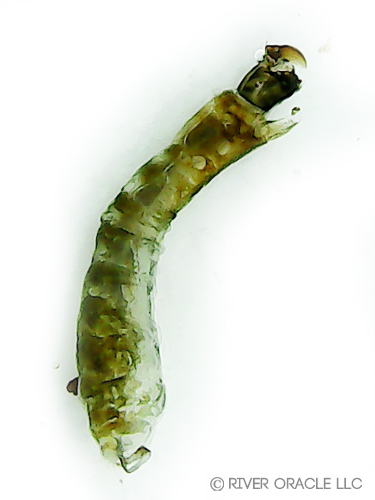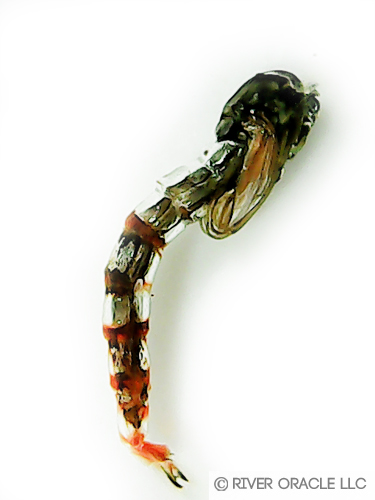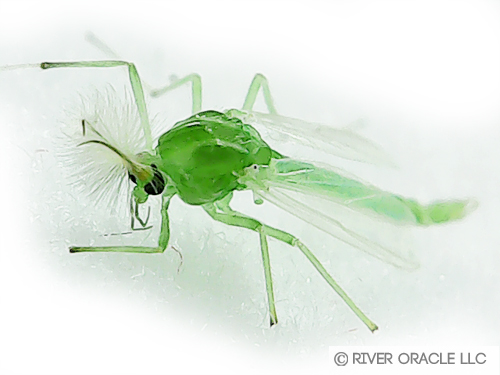A Fly Fisher's Guide to Identifying and Matching Midges: Part I
Posted by Peter Stitcher on 1st Jan 2016
We've all been there. You are on the water, fly rod in hand when the trout start to rise. You stop your next cast short and just watch for a while, hoping to catch a glimpse of what the trout are feeding on. You squint at the water, adjust your sunglasses, and continue to stare as you start to wonder if your eyes are playing tricks on you. You don't see anything at first, but then - jumping out of the background - there they are: a swarm of small midges! Little more than the size of the most insignificant snowflake or grain of sand, your hand hovers over the rows of flies in your box, drifting back and forth across the rows of midge patterns, as you second guess if a bug so small could actually tempt a trout to rise. The proof stands before you as a series of trout fins and mouths continues to break the surface of the water in front of you. It's time to become the Midge Master!
Though small in stature, what the midges lack in size, they more than make up for in numbers. In fact, they make up one of the trout's primary four-season sources of food in most waters. With nearly 17,000 species of midge crowding our North American waters, here are the key characteristics that will help you identify this family in each of its unique life stages the next time you are on the water.
The Midge Larva
While at first glance, midge larva might appear similar to their aquatic neighbor the caddis fly who also begin their lives as larva, there are a few family traits that will help you to quickly tell them apart. Varying in length from 2 - 40mm, midges will most commonly be matched by a size 26-18 hook on most waters. The maggot-like bodies of midges are segmented, vary in color from tan, black, olive, white, and many are even a bright red due to the high levels of hemoglobin in their bodies. One defining characteristic of midge larva are their small, reduced heads that stand out in stark contrast from those of caddis larva which have large, pronounced mandibles used for breaking down leaves and grass. If still in doubt as to the family of invertebrate you are looking at, midge larva do not have legs, while those of the caddis family have legs on both their thorax and end of their abdomen.
The Midge Pupa
Within a matter of weeks, the midge larva begins its transition into adulthood in a process called pupation. Whether attached to a rock on the bottom of the river, or suspended within the water column, it is during this phase that the larva develops the enlarged abdomen, legs, antenna, and wing buds of the adult. Stockier in form and with a more pronounced thorax than the larva, midge pupa make their ascent through the water column in a jerky, whip-like fashion. Of all of the the life stages of the midge, the emerging pupa is probably the more most important to the fly angler and the most heavily pursued by trout. Trout feeding on midge pupa can easily be identified as they "porpoise" in the water, with there backs and fins being visible above the surface as they roll on the emerging pupa.
The Adult Midge
As with any adult aquatic invertebrate flying above or floating on the water, the primary characteristic used to identify their family is the number of wings and the position of those wings when resting. Unique among the four major food groups of the trout (Mayflies, Caddis Flies, Stoneflies, and Midges) the adult midge only has one pair of wings, while each of the other families boasts two sets of wings. Varying in hook size from a 28 - 12, the most common and productive sized patterns are going to be in the 18-24 range.
Armed with the ancient knowledge of the midge masters, you are now ready to employ the power of the midge your next time on the water! Don't be intimidated by the small stature of the midge, but delve into your fly box with confidence as you match the hatch, tie on a size 24 midge emerger, and hold on tight! Make sure to check in again next month for The Midge Master - Part II as we review the top twelve, all-water midge patterns.





